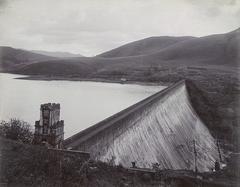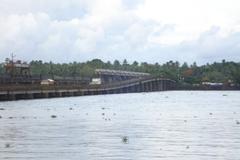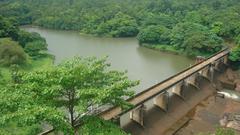Visiting Pandalam Palace: History, Tips, and Visitor Information
Date: 23/07/2024
Introduction
Pandalam Palace, situated in Kozhenchery, India, is a treasure trove of historical, cultural, and religious significance. Established around the 10th century AD by the Pandya kings of Tamil Nadu, who migrated to Kerala, the palace is a testament to the rich cultural heritage of the region. Its architectural splendor is marked by traditional Kerala style, featuring sloping roofs, wooden carvings, and intricate detailing. The palace complex is a harmonious blend of administrative offices, residential quarters, and temples, constructed using locally sourced materials like teak wood and laterite stone, ensuring both aesthetic appeal and durability.
The palace holds immense religious significance, particularly due to its association with the Sabarimala pilgrimage. Legend has it that Lord Ayyappa, the presiding deity of Sabarimala, was adopted by the royal family of Pandalam and spent his childhood at the palace. This connection makes Pandalam Palace a crucial stop for pilgrims on their way to Sabarimala. The sacred ornaments (Thiruvabharanam) used to adorn the deity during the Makaravilakku festival are kept at the palace and taken to Sabarimala in a grand procession (The Hindu).
Efforts to preserve and restore Pandalam Palace have been undertaken by the Archaeological Survey of India (ASI) and the Kerala State Department of Archaeology, ensuring the structural integrity and historical authenticity of this monument. These initiatives include the restoration of wooden carvings, repair of the roofing, and conservation of ancient artifacts housed within the palace (ASI).
Visitors to Pandalam Palace can immerse themselves in Kerala’s rich cultural heritage, witness traditional art forms, explore historical artifacts, and participate in various religious festivals and rituals. The palace also offers numerous opportunities for educational and research activities, making it a must-visit destination for history enthusiasts, scholars, and pilgrims alike.
Table of Contents
- Introduction
- Historical Background
- Visiting Hours and Tickets
- Role in Sabarimala Pilgrimage
- Historical Events and Royal Lineage
- Preservation and Restoration Efforts
- Cultural and Religious Significance
- Influence on Local Economy
- Educational and Research Opportunities
- Travel Tips
- Nearby Attractions
- Accessibility
- Challenges and Future Prospects
- FAQ
- Conclusion
Historical Background
Origins and Establishment
Pandalam Palace, located in the town of Pandalam in the Pathanamthitta district of Kerala, India, holds a significant place in the history and culture of the region. The palace is believed to have been established around the 10th century AD by the Pandya kings of Tamil Nadu, who migrated to Kerala. The Pandya dynasty, known for its rich cultural heritage and architectural prowess, sought refuge in Kerala due to political turmoil in their homeland and established the Pandalam kingdom, with Pandalam Palace as their royal residence.
Architectural Significance
The architecture of Pandalam Palace is a testament to the traditional Kerala style, characterized by sloping roofs, wooden carvings, and intricate detailing. The palace complex includes several buildings, each serving different purposes, such as administrative offices, residential quarters, and temples. The use of locally sourced materials like teak wood and laterite stone not only adds to the aesthetic appeal but also ensures the durability of the structures.
Visiting Hours and Tickets
Pandalam Palace is open to visitors from 9 AM to 5 PM daily. Tickets can be purchased at the entrance, with general admission priced at INR 50 for adults and INR 30 for children. Discounts are available for students and senior citizens. For the most updated information on visiting hours and ticket prices, check the official website or contact the palace management.
Role in Sabarimala Pilgrimage
One of the most significant aspects of Pandalam Palace is its association with the Sabarimala pilgrimage. According to legend, Lord Ayyappa, the presiding deity of Sabarimala, was adopted by the royal family of Pandalam. The palace is believed to be the place where Lord Ayyappa spent his childhood. This connection makes Pandalam Palace a crucial stop for pilgrims on their way to Sabarimala. The sacred ornaments (Thiruvabharanam) used to adorn the deity during the Makaravilakku festival are kept at the palace and taken to Sabarimala in a grand procession (The Hindu).
Historical Events and Royal Lineage
The history of Pandalam Palace is intertwined with numerous historical events and the lineage of the royal family. The Pandalam kingdom played a pivotal role in the regional politics of Kerala, often engaging in alliances and conflicts with neighboring kingdoms. The royal family of Pandalam is known for their patronage of arts, culture, and religion, contributing significantly to the development of the region, including the establishment of educational institutions and temples.
Preservation and Restoration Efforts
Over the centuries, Pandalam Palace has witnessed the ravages of time and weather. However, efforts have been made to preserve and restore this historical monument. The Archaeological Survey of India (ASI) and the Kerala State Department of Archaeology have undertaken several initiatives to maintain the structural integrity and historical authenticity of the palace. These efforts include the restoration of wooden carvings, repair of the roofing, and conservation of ancient artifacts housed within the palace (ASI).
Cultural and Religious Significance
Pandalam Palace is not just a historical monument but also a cultural and religious hub. The palace hosts several festivals and rituals that attract devotees and tourists alike. The annual Pandalam Valiya Koikkal Temple festival is a major event that showcases the rich cultural heritage of the region. The palace also serves as a venue for various cultural programs, including traditional music and dance performances, which provide a glimpse into the vibrant cultural life of Kerala.
Influence on Local Economy
The historical and cultural significance of Pandalam Palace has a considerable impact on the local economy. The influx of pilgrims and tourists generates revenue for local businesses, including hotels, restaurants, and shops. The palace also provides employment opportunities for local artisans and craftsmen involved in restoration and maintenance work. Additionally, the palace’s association with the Sabarimala pilgrimage boosts the local economy during the pilgrimage season.
Educational and Research Opportunities
Pandalam Palace offers numerous opportunities for educational and research activities. Scholars and historians frequently visit the palace to study its architecture, history, and cultural significance. The palace archives contain valuable manuscripts and documents that provide insights into the history of the Pandalam kingdom and the region. Educational institutions often organize field trips to the palace, allowing students to learn about the historical and cultural heritage of Kerala firsthand.
Travel Tips
When planning your visit, consider traveling during the cooler months from October to February, which is the best time to visit. Ensure you wear comfortable clothing and respect the cultural norms. It is advisable to carry water and snacks, as well as to be prepared for long walks within the palace complex.
Nearby Attractions
After visiting Pandalam Palace, explore nearby attractions like the Sabarimala Temple, Aranmula Parthasarathy Temple, and the scenic Pamba River. These sites offer additional insights into the rich history and culture of Kerala.
Accessibility
Pandalam Palace is accessible for visitors with disabilities. Wheelchair ramps and guided tours are available to ensure everyone can enjoy the experience.
Challenges and Future Prospects
Despite its historical and cultural importance, Pandalam Palace faces several challenges. The increasing number of visitors puts pressure on the infrastructure, necessitating continuous maintenance and conservation efforts. Additionally, the palace needs to balance its role as a tourist attraction with its religious significance, ensuring that the sanctity of the site is preserved. Looking ahead, there are plans to enhance the visitor experience by improving facilities and providing informative guides and exhibits that highlight the palace’s history and significance.
FAQ
Q: What are the visiting hours for Pandalam Palace? A: The palace is open from 9 AM to 5 PM daily. Please check the official website for the most current information.
Q: How much are the tickets to visit Pandalam Palace? A: General admission is INR 50 for adults and INR 30 for children. It’s recommended to verify the latest prices on the official website.
Q: Is Pandalam Palace accessible for visitors with disabilities? A: Yes, the palace is equipped with wheelchair ramps and offers guided tours to accommodate visitors with disabilities.
Q: Are there any nearby attractions to visit after Pandalam Palace? A: Yes, you can explore nearby attractions such as the Sabarimala Temple, Aranmula Parthasarathy Temple, and the scenic Pamba River.
Q: What is the best time to visit Pandalam Palace? A: The best time to visit Pandalam Palace is during the cooler months from October to February when the weather is pleasant and several cultural events take place.
Conclusion
Pandalam Palace stands as a beacon of Kerala’s rich cultural and historical legacy. Its architectural grandeur, deep religious significance, and historical relevance make it a prime destination for tourists, pilgrims, and scholars. The palace’s association with the Sabarimala pilgrimage, where sacred ornaments are taken in a grand procession to adorn Lord Ayyappa, underscores its spiritual importance (The Hindu).
Preservation efforts by the Archaeological Survey of India and the Kerala State Department of Archaeology have helped maintain the palace’s structural and historical integrity, ensuring that future generations can continue to appreciate its splendor (ASI). The palace not only serves as a historical monument but also as a vibrant cultural hub, hosting traditional art performances and religious festivals that showcase Kerala’s rich cultural heritage.
For visitors, Pandalam Palace offers a unique opportunity to delve into the history and culture of Kerala, participate in religious rituals, and enjoy the serene beauty of traditional Kerala architecture. Whether you are a history buff, a devout pilgrim, or a curious traveler, a visit to Pandalam Palace is sure to be a rewarding and enriching experience. To stay updated on visiting hours, ticket prices, and special events, make sure to check the official website and download our mobile app Audiala for the latest information.







